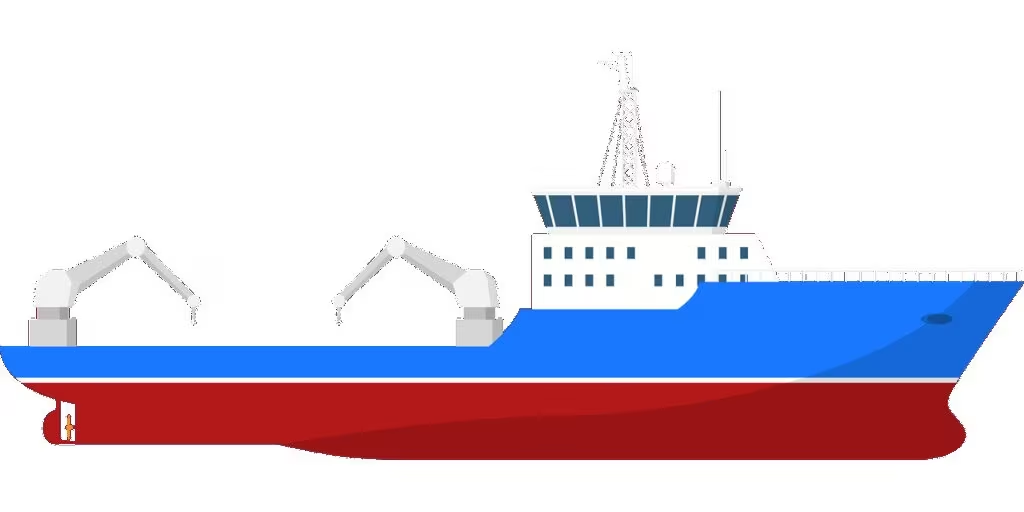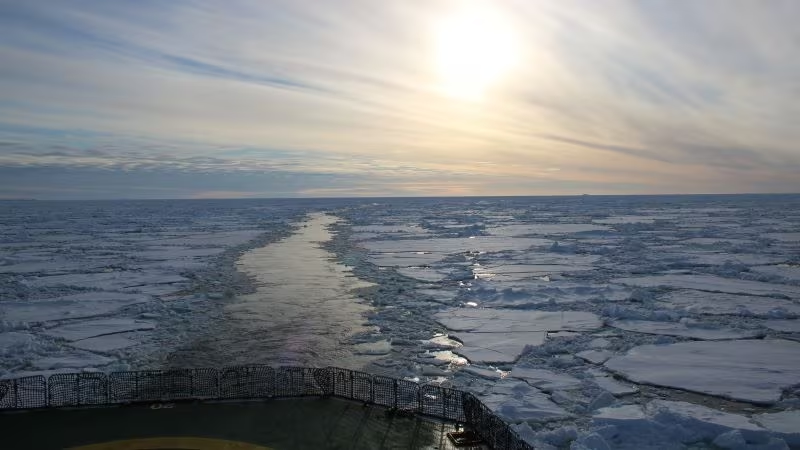The Accidental Discovery of the Icefish Nursery
In February 2021, an international scientific expedition embarked on a high-stakes mission in the treacherous western Weddell Sea, Antarctica: to locate the remains of Sir Ernest Shackleton’s lost vessel, the Endurance. While the search for the famous shipwreck was the primary goal, the team aboard the German research vessel Polarstern made a far more profound and unexpected discovery for marine biology—the largest fish breeding colony ever recorded globally.
Using advanced deep-sea imaging technology, researchers from the Alfred Wegener Institute (AWI) stumbled upon a vast, densely populated area of the seafloor carpeted with millions of active fish nests. This colossal reproductive site, now informally dubbed the “Icefish Nursery,” immediately shifted the focus of the expedition, providing critical new insights into the ecology of the Southern Ocean.

Scale and Scope of the Megacolony
The sheer size of the colony, detailed in subsequent scientific publications, is staggering. The breeding ground of the Neopagetopsis ionah species, a type of icefish, spans an area of approximately 240 square kilometers—roughly the size of the island of Malta or the city of Atlanta.
Mapping the Millions of Nests
To map the extent of the colony, the AWI team deployed the Ocean Floor Observation and Bathymetry System (OFOBS), a towed camera sled that captures high-resolution images and video of the seabed. Over several weeks, the OFOBS system was towed across the area, collecting data that allowed scientists to extrapolate the total population.
Key statistics regarding the Icefish Nursery:
- Total Area: Approximately 240 square kilometers.
- Estimated Nests: An astonishing 60 million active nests.
- Nest Structure: Each nest is circular, measuring about 75 centimeters in diameter and 15 centimeters deep.
- Egg Count: Researchers estimate each nest contains an average of 1,500 to 2,000 eggs.
- Density: The nests are packed tightly together, often spaced just a few meters apart, demonstrating an unprecedented density for a deep-sea fish colony.
This discovery fundamentally changes the understanding of deep-sea reproductive strategies, suggesting that some fish species aggregate in numbers previously thought impossible in the cold, resource-limited environment of the Antarctic deep.
The Unique Biology of the Icefish
The species at the heart of this discovery, Neopagetopsis ionah, belongs to the family Channichthyidae, commonly known as icefish. These fish are unique inhabitants of the Southern Ocean, possessing remarkable biological adaptations that allow them to thrive in near-freezing waters.
Transparent Blood and Antifreeze Proteins
Icefish are the only vertebrates known to lack hemoglobin—the protein that gives blood its red color and transports oxygen. Their blood is transparent, and they rely on dissolved oxygen directly in their plasma. This adaptation, while metabolically costly, allows them to survive in oxygen-rich, extremely cold water.
Furthermore, they produce antifreeze glycoproteins that prevent their blood and tissues from freezing solid. This biological expertise is crucial for survival in the Weddell Sea, where water temperatures hover near the freezing point of seawater.

Why the Weddell Sea Sustains This Life
The existence of such a massive, stable breeding ground requires specific environmental conditions. The researchers determined that the colony is sustained by a localized flow of slightly warmer water.
While the deep Weddell Sea is typically frigid, the Icefish Nursery sits above an area where water flows from the shallower continental shelf down into the deeper basin. This water is slightly warmer, maintaining a temperature of approximately 2 degrees Celsius—significantly warmer than the surrounding deep-sea temperatures.
This thermal anomaly creates an ideal incubator for the icefish eggs, which require a long incubation period (estimated to be several months or even a year) to develop fully. The warmer water likely speeds up the metabolic processes of the eggs and larvae, increasing the viability of the massive colony.
“The discovery of the Icefish Nursery is a monumental finding that underscores the incredible biodiversity hidden beneath the Antarctic ice. The sheer magnitude of the colony, coupled with the unique environmental conditions sustaining it, makes this area scientifically invaluable,” noted the lead researchers in their findings.
Conservation Implications and the MPA
Beyond its scientific novelty, the discovery of the world’s largest fish breeding colony carries significant weight for international conservation efforts.
Bolstering the Case for Protection
The Icefish Nursery is located within the area proposed for the Weddell Sea Marine Protected Area (MPA). The establishment of this MPA has been a long-standing goal of the Commission for the Conservation of Antarctic Marine Living Resources (CCAMLR), an international body responsible for managing Southern Ocean resources.
MPAs are critical tools for protecting vulnerable ecosystems from human activities, particularly fishing and deep-sea resource extraction. The existence of a single, massive reproductive hub for a key Antarctic species provides irrefutable scientific evidence that this specific region requires the highest level of protection.

Future Research and Monitoring
Following the 2021 discovery, the AWI has committed to long-term monitoring of the Icefish Nursery. They have deployed specialized deep-sea camera systems designed to observe the nests and the behavior of the parent fish over extended periods. This ongoing research will provide crucial data on:
- Reproductive Cycles: Understanding the precise timing and duration of the icefish breeding season.
- Predator-Prey Dynamics: Identifying which species rely on the massive egg and larval output of the colony.
- Climate Vulnerability: Assessing how changes in water temperature or ocean currents, driven by climate change, might impact the stability of the warm water flow that sustains the nursery.
The findings serve as a powerful reminder that even in the most remote parts of the planet, vast, complex ecosystems remain undiscovered and highly vulnerable to human impact.
Key Takeaways
This accidental finding during the Endurance search expedition has delivered one of the most important biological discoveries in recent Antarctic history. Here are the essential facts readers need to know:
- The Discovery: Researchers found the world’s largest known fish breeding colony in the western Weddell Sea, Antarctica, in February 2021.
- The Species: The colony consists of approximately 60 million active nests belonging to the icefish species, Neopagetopsis ionah.
- The Scale: The breeding ground covers an area of 240 square kilometers.
- The Mechanism: The colony is sustained by a localized flow of relatively warm water (around 2 degrees Celsius) that provides ideal incubation conditions.
- The Significance: The discovery provides compelling scientific justification for the immediate establishment of the proposed Weddell Sea Marine Protected Area (MPA), highlighting the region’s critical role in Southern Ocean biodiversity.
Conclusion: A New Priority for Antarctic Science
While the search for the Endurance ultimately led to its successful location in March 2022, the biological discovery made a year earlier has arguably greater long-term scientific and environmental importance. The Icefish Nursery represents a critical, previously unknown hotspot of biodiversity and biomass production in the deep sea. The focus of the scientific community now shifts to ensuring this fragile, massive reproductive site is safeguarded for future generations, reinforcing the urgent need for international cooperation in Antarctic conservation.
Original author: Ashley Strickland
Originally published: October 29, 2025
Editorial note: Our team reviewed and enhanced this coverage with AI-assisted tools and human editing to add helpful context while preserving verified facts and quotations from the original source.
We encourage you to consult the publisher above for the complete report and to reach out if you spot inaccuracies or compliance concerns.

